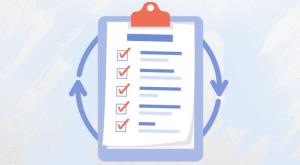Revival Period
Blog Title
2454 |
The revival period is the window of time that the insurance provider provides for the policyholder to reinstate a cancelled policy. Even if the policyholder desires to pay all the outstanding premiums, the policy cannot be reactivated once the revival period has passed.
An insurance policy is deemed to have lapsed if the policyholder defaults on the payment of the renewal premium, missing both the due date and the grace period offered by the insurance company. This is where the revival period comes into play.
Once a policy lapses, the insurance company offers a policy revival or reactivation option for a specific duration after the grace period. During this period, the policy can be reactivated based on specific terms and conditions. The policyholder should pay the pending premiums along with interest. At the same time, they may have to go through medical tests once again to revive the policy. In most cases, life insurance policies have revival periods of two years after they lapse. The policyholder can contact the insurance company and pay the premiums along with other charges to revive the policy within this period.
What is the Process of Reviving your Lapsed Policy?
The process of reviving a lapsed life insurance policy is dependent on the amount of time that has passed between the date of policy lapse and the date of the request for revival.
- Within 6 Months of Policy Lapse
If you want to apply to revive your life insurance policy within 6 months of its expiration, the process is straightforward. You can reinstate your life insurance coverage by contacting the insurance company and paying the late premiums plus interest at a rate between 12-18% of the premium amount. You can also choose to renew your life insurance policy through your life insurance provider's official website.
- After 6 Months Of Policy Lapse
If your life insurance policy has lapsed for more than 6 months, you can request for revival and pay the late premiums plus interest set by the insurance company. Penalties may also be imposed based on the insurance provider's terms and conditions. In some situations, the insurance company's discretion is required to renew your life insurance coverage. The insurance company may raise your premiums or require you to undergo medical tests in order to analyze your current health situation.
For example, suppose Ravi purchased a life insurance policy with a tenure of 20 years. He paid his premium annually for 15 years but had to stop the payment for the 16th year due to a financial crunch. He had to wait for three months before his pending payments were cleared. He thus contacted the insurance company with a request to revive the policy. Since he applied within the revival period of two years and had a valid reason for policy discontinuation, the insurance company accepted the revival request. He cleared his pending premium with interest, and the policy became active again with the full resumption of life coverage and other benefits.
Siddhant Dubey - Writer & Photographer
Siddhant works as a freelance content writer who is interested in a wide range of spheres from photography and personal finance to cooking. He is also an aspiring photographer striving to showcase life around him through his vision.












